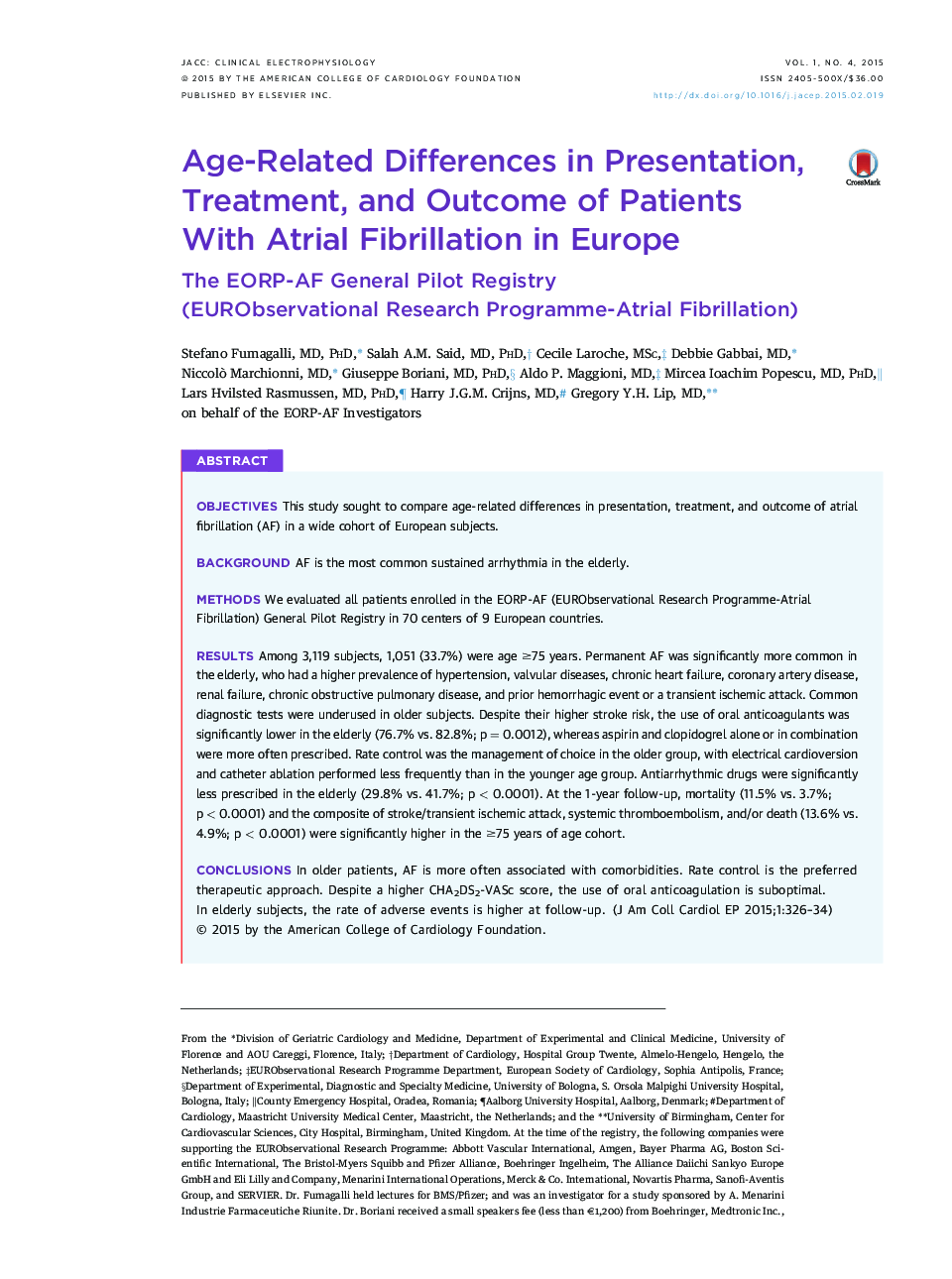| کد مقاله | کد نشریه | سال انتشار | مقاله انگلیسی | نسخه تمام متن |
|---|---|---|---|---|
| 2942208 | 1177107 | 2015 | 9 صفحه PDF | دانلود رایگان |

ObjectivesThis study sought to compare age-related differences in presentation, treatment, and outcome of atrial fibrillation (AF) in a wide cohort of European subjects.BackgroundAF is the most common sustained arrhythmia in the elderly.MethodsWe evaluated all patients enrolled in the EORP-AF (EURObservational Research Programme-Atrial Fibrillation) General Pilot Registry in 70 centers of 9 European countries.ResultsAmong 3,119 subjects, 1,051 (33.7%) were age ≥75 years. Permanent AF was significantly more common in the elderly, who had a higher prevalence of hypertension, valvular diseases, chronic heart failure, coronary artery disease, renal failure, chronic obstructive pulmonary disease, and prior hemorrhagic event or a transient ischemic attack. Common diagnostic tests were underused in older subjects. Despite their higher stroke risk, the use of oral anticoagulants was significantly lower in the elderly (76.7% vs. 82.8%; p = 0.0012), whereas aspirin and clopidogrel alone or in combination were more often prescribed. Rate control was the management of choice in the older group, with electrical cardioversion and catheter ablation performed less frequently than in the younger age group. Antiarrhythmic drugs were significantly less prescribed in the elderly (29.8% vs. 41.7%; p < 0.0001). At the 1-year follow-up, mortality (11.5% vs. 3.7%; p < 0.0001) and the composite of stroke/transient ischemic attack, systemic thromboembolism, and/or death (13.6% vs. 4.9%; p < 0.0001) were significantly higher in the ≥75 years of age cohort.ConclusionsIn older patients, AF is more often associated with comorbidities. Rate control is the preferred therapeutic approach. Despite a higher CHA2DS2-VASc score, the use of oral anticoagulation is suboptimal. In elderly subjects, the rate of adverse events is higher at follow-up.
Journal: JACC: Clinical Electrophysiology - Volume 1, Issue 4, August 2015, Pages 326–334